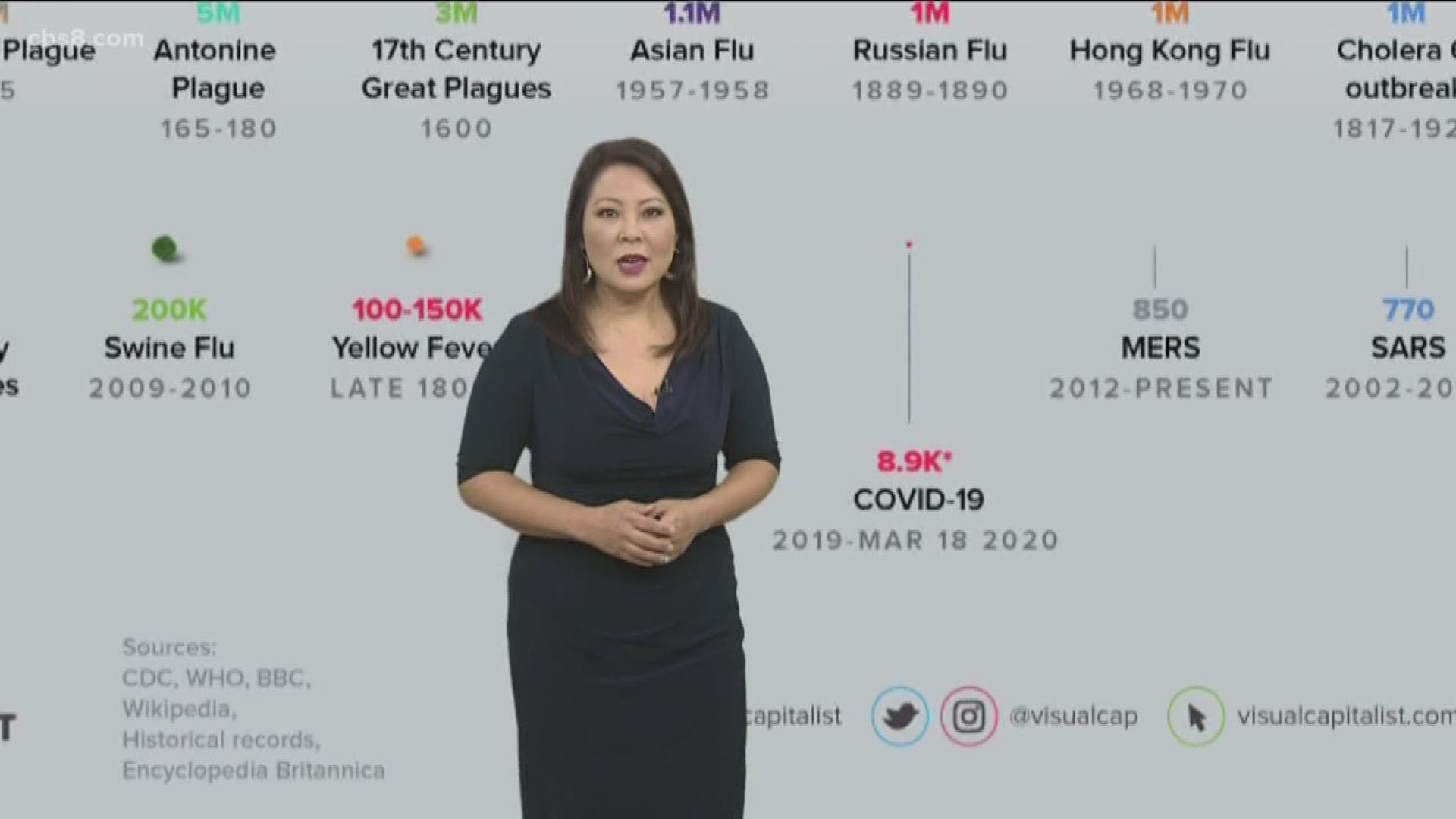SAN DIEGO — Deadly diseases have existed since the beginning of humanity, but how does the novel coronavirus outbreak compare to some of the most deadly pandemics in history?
We found a really interesting infographic from modern business media company, Visual Capitalist.
It shows a timeline of pandemics through the centuries, starting with The Antonine Plague of 165 to 180 AD, which killed an estimated 5 million people in the Roman Empire.
It ends with the novel coronavirus or COVID-19, which is currently spreading around the globe.
There's also an illustration of the scale of the various pandemics by death toll.
The Black Death or Bubonic Plague, which was spread by fleas, killed as many as 200 million people in just a few year's time. It's estimated that up to half of Europe's entire population was wiped out from the plague in the 14th century.
The Small Pox outbreak in the 1500's killed an estimated 56 million; the majority were children.
In 1918, the Spanish Flu killed approximately 40 to 50 million.
The HIV/AIDS pandemic is currently the fifth deadliest. Since 1981, 25 million to 35 million people have died.
A decade ago, the Swine Flu claimed the lives of 200,000 people.
As of March 18th, the death toll for the novel coronavirus is listed at 8,810, according to the Johns Hopkins University Center for Systems Science and Engineering.
The COVID-19 death toll has well surpassed that of MERS (850) and SARS (770) and is projected by health officials to climb to more than one million if it continues to spread at the current rate.
The hope, however, is that measures enacted to self-isolate and self-quarantine will keep the death toll much lower.
For a closer look at the infographic and to learn more about Visual Capitalist, click here.
______________________________________________________________
NEWS 8 joined forces with The San Diego Foundation to raise IMMEDIATE, EMERGENCY FUNDS for our most vulnerable neighbors in need. Here is how you can help.
BACKGROUND:
According to the CDC, coronavirus (COVID-19) is a family of viruses that is spreadable from person to person. Coronavirus is believed to have been first detected in a seafood market in Wuhan, China in December 2019. If someone is sick with coronavirus, the symptoms they may show include mild to severe respiratory illness, cough, and difficulty breathing.
Currently, there is no vaccine, however, the CDC suggests the following precautions, along with any other respiratory illness:
Avoid close contact with people who are sick.
Avoid touching your eyes, nose, and mouth.
Stay home when you are sick.
Cover your cough or sneeze with a tissue, then throw the tissue in the trash.
Clean and disinfect frequently touched objects and surfaces using a regular household cleaning spray or wipe.
Wash your hands with soap and water for a minimum of 20 seconds.
The CDC also says facemasks should only be used by people who show symptoms of the virus. If you’re not sick, you do not have to wear a facemask. The CDC says the immediate risk to the U.S. public is low.

